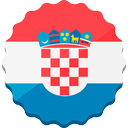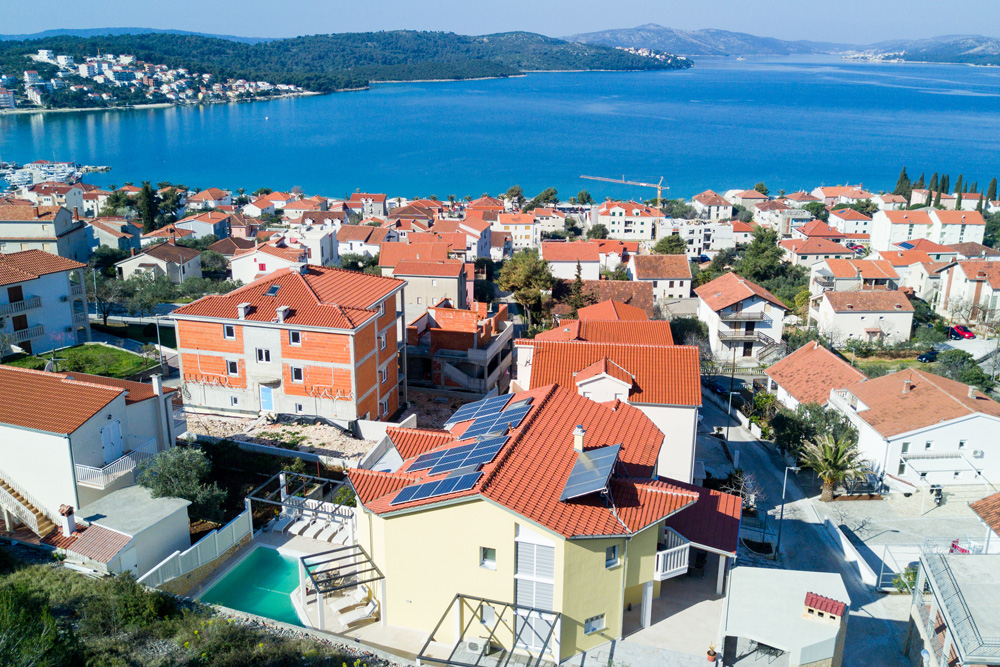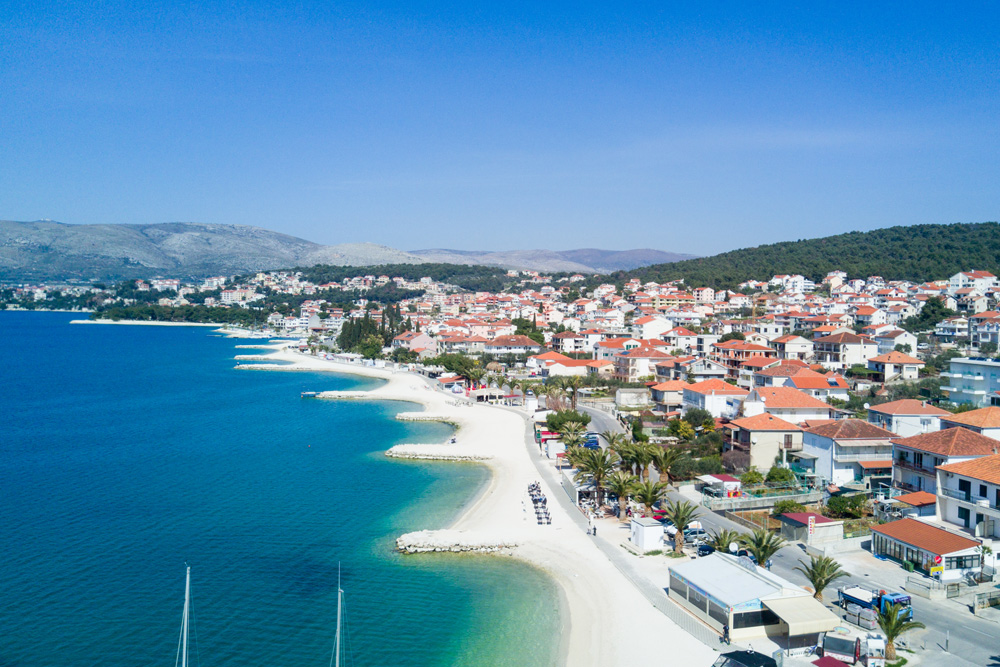Ciovo island (Čiovo)
CIOVO, an island in the central Dalmatian archipelago; area 28.8 sq km (length 15.3 km, width up to 3.5 km); population 6,071; highest peak Rudine (218 m). In the east, Ciovo is about 2 km away from the mainland (Cape Marjan); in the north-west it is connected with the mainland by a bascule bridge (in Trogir). The island of Ciovo actually encloses the Kastela Gulf. Annual rainfall is about 900 mm. The southern side of the island is exposed to the sirocco, however it is protected from the bora, in contrast to the northern coast (protected from the sirocco but exposed to the bora). There are no surface water streams. Brackish water occurs in Slatine, Saldun and near Sveti Kriz. There are also several caves, the most prominent being Bilosaj and Anicina Jama (Annie's Pit).
The vegetation is typically Mediterranean, consisting chiefly in underbrush (holm oak, myrtle, wormwood, juniper etc.), especially between Okrug Gornji and Okrug Donji. On the northern side of the island are forests of pine and cypress (particularly on the way from Trogir to Arbanija). Major crops include olives, figs, almonds, vines and citrus fruit. Apart from a part of the town of Trogir, there are several villages: Arbanija, Zedno, Okrug Gornji, Okrug Donji, and the hamlets of Slatine and Prizidnica. On the western part of the island are sand and pebble beaches, the largest being those in the Saldun bay. Smaller coves include Duga, Tatinja and Movarstica. Along the south-western coast are several smaller islands (Sveta Fumija, Kraljevac, Galerija, etc.); their cliffs provide good opportunities for underwater fishing. On the eastern side of the island are smaller beaches, around Slatine and the Supetar Cove.
The Latin name of the island (Bua, Boa, Bavo, Bubus) is probably of Illyrian origin. The Slavic name of Ciovo is related with the name of the eastern cape of the island of Caput Jovis. In the Middle Ages, Ciovo had a number of villages, hermits' abodes and leprosaria. Traces of the pre-Romanesque church of St. Peter have been found near Slatine, in the Supetar cove. The mediaeval church of St. Maurice has been preserved in Zedno. In Ciovo is also the pre-Romanesque church of Our Lady near the Sea. The population of Ciovo increased in the 15th century through the settlement of refugees who fled from the Turks. Simultaneously, the suburban areas of Trogir also extended on Ciovo.
The church and the Dominican monastery of the Holy Cross (5 km from Trogir) were built in the 15th century by the masters Ivan Drakanovic and Nikola Mladinov. The mo-n-ast-ery features a nice cloister; the polychrome vault of the dining room has been preserved, as well as the paintings by Matija Poncun and other. The Franciscan mo-nastery of St. Anthony keeps a painting by Palma the Younger and a sculpture of St. Magdalene by Ivan Duknovic. Along the coast is the church of St. Jerome. On the eastern part of the island is the hermitage church of Our Lady of Prizidnica the painted Gothic crucifix and the Byzantine icon are now ke--pt at the parish church in Slatine. Along the south-western side of Ciovo is a small island called Fumija, with the remains of the late antique or early mediaeval church of St. Fumija and farm buildings of the Benedictine monks from Trogir.
The island is actually an extension of Trogir but also a kind of breakwater for the Kastela Gulf. Along with vacation opportunities, Ciovo also offers a number of tourist attractions and historical monuments. Additional visitor opportunities are provided in the nearby towns of Trogir and Split.
Accommodation facilities are provided in Arba-nija, Donji and Gornji Okrug, Ciovo and Slatine (rest homes).





